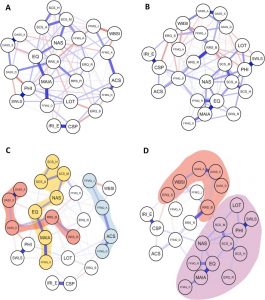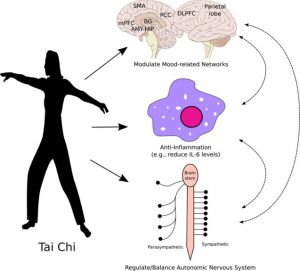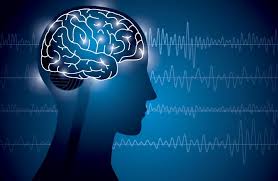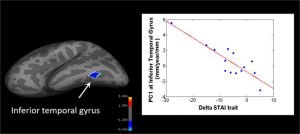Improve Chronic Low Back Pain with Yoga
By John M. de Castro, Ph.D.
“Yoga is great for working on flexibility and core stability, correcting posture, and breathing—all of which are necessary for a healthy back.” – Sasha Cyrelson
Low Back Pain is the leading cause of disability worldwide and affects between 6% to 15% of the population. It is estimated, however, that 80% of the population will experience back pain sometime during their lives. There are varied treatments for low back pain including chiropractic care, acupuncture, biofeedback, physical therapy, cognitive behavioral therapy, massage, surgery, opiate pain killing drugs, steroid injections, and muscle relaxant drugs. These therapies are sometimes effective particularly for acute back pain. But, for chronic conditions the treatments are less effective and often require continuing treatment for years and opiate pain killers are dangerous and can lead to abuse, addiction, and fatal overdoses. Obviously, there is a need for safe and effective treatments for low back pain that are low cost and don’t have troublesome side effects.
Mindfulness practices have been found to be effective in treating pain and have been shown to be safe and effective in the management of low back pain. Yoga practice has been shown to have a myriad of health benefits. These include relief of chronic pain. Yoga practice has also been shown to be effective for the relief of chronic low-back pain. Many forms of yoga focus on the proper alignment of the spine, which could directly address the source of back and neck pain for many individuals. So, it makes sense to further explore the effectiveness of yoga practice for chronic low back pain.
In today’s Research News article “Yoga, Physical Therapy, or Education for Chronic Low Back Pain: A Randomized Noninferiority Trial.” (See summary below or view the full text of the study at: https://www.ncbi.nlm.nih.gov/pmc/articles/PMC6392183/), Saper and colleagues recruited adult patients with low back pain lasting at least 12 weeks and randomly assigned them to receive yoga, physical therapy, or education. Yoga training consisted of 12 weekly, 75 minute classes with 30 minutes of daily practice at home including relaxation, breathing exercises, meditation, and poses. Drop-in yoga classes were available during the subsequent 40 weeks. Physical therapy occurred in 15 60-minute session of graded exercise over 12 weeks. Booster classes were offered during the subsequent 40 weeks. Education included information on chronic low back pain self-management, stretching, strengthening, and the role of emotions and fear avoidance. They were measured before and after training and at 14, 28, and 40 weeks later for back-related function, pain intensity, global improvement, patient satisfaction, and health related quality of life.
They found that in comparison to baseline both the yoga and physical therapy groups had improvements in back-related function and pain intensity and were less likely to use pain medication at the end of training. These improvements were maintained 40 weeks later. Hence, both yoga practice and physical therapy were equivalently safe and effective treatments for low back pain and the improvements produced were enduring.
So, improve chronic low back pain with yoga.
“Yoga is one of the more effective tools for helping soothe low back pain. The practice helps to stretch and strengthen muscles that support the back and spine, such as the paraspinal muscles that help you bend your spine, the multifidus muscles that stabilize your vertebrae, and the transverse abdominis in the abdomen, which also helps stabilize your spine.” – Matthew Solan
CMCS – Center for Mindfulness and Contemplative Studies
This and other Contemplative Studies posts are also available on Google+ https://plus.google.com/106784388191201299496/posts and on Twitter @MindfulResearch
Study Summary
Saper, R. B., Lemaster, C., Delitto, A., Sherman, K. J., Herman, P. M., Sadikova, E., … Weinberg, J. (2017). Yoga, Physical Therapy, or Education for Chronic Low Back Pain: A Randomized Noninferiority Trial. Annals of internal medicine, 167(2), 85–94. doi:10.7326/M16-2579
Abstract
Background:
Yoga is effective for mild to moderate chronic low back pain (cLBP), but its comparative effectiveness with physical therapy (PT) is unknown. Moreover, little is known about yoga’s effectiveness in underserved patients with more severe functional disability and pain.
Objective:
To determine whether yoga is noninferior to PT for cLBP.
Design:
12-week, single-blind, 3-group randomized noninferiority trial and subsequent 40-week maintenance phase. (ClinicalTrials.gov: NCT01343927)
Setting:
Academic safety-net hospital and 7 affiliated community health centers.
Participants:
320 predominantly low-income, racially diverse adults with nonspecific cLBP.
Intervention:
Participants received 12 weekly yoga classes, 15 PT visits, or an educational book and newsletters. The maintenance phase compared yoga drop-in classes versus home practice and PT booster sessions versus home practice.
Measurements:
Primary outcomes were back-related function, measured by the Roland Morris Disability Questionnaire (RMDQ), and pain, measured by an 11-point scale, at 12 weeks. Prespecified noninferiority margins were 1.5 (RMDQ) and 1.0 (pain). Secondary outcomes included pain medication use, global improvement, satisfaction with intervention, and health-related quality of life.
Results:
One-sided 95% lower confidence limits were 0.83 (RMDQ) and 0.97 (pain), demonstrating noninferiority of yoga to PT. However, yoga was not superior to education for either outcome. Yoga and PT were similar for most secondary outcomes. Yoga and PT participants were 21 and 22 percentage points less likely, respectively, than education participants to use pain medication at 12 weeks. Improvements in yoga and PT groups were maintained at 1 year with no differences between maintenance strategies. Frequency of adverse events, mostly mild self-limited joint and back pain, did not differ between yoga and PT.
Limitations:
Participants were not blinded to treatment assignment. The PT group had disproportionate loss to follow-up.
Conclusion:
A manualized yoga program for nonspecific cLBP was noninferior to PT for function and pain.
https://www.ncbi.nlm.nih.gov/pmc/articles/PMC6392183/









